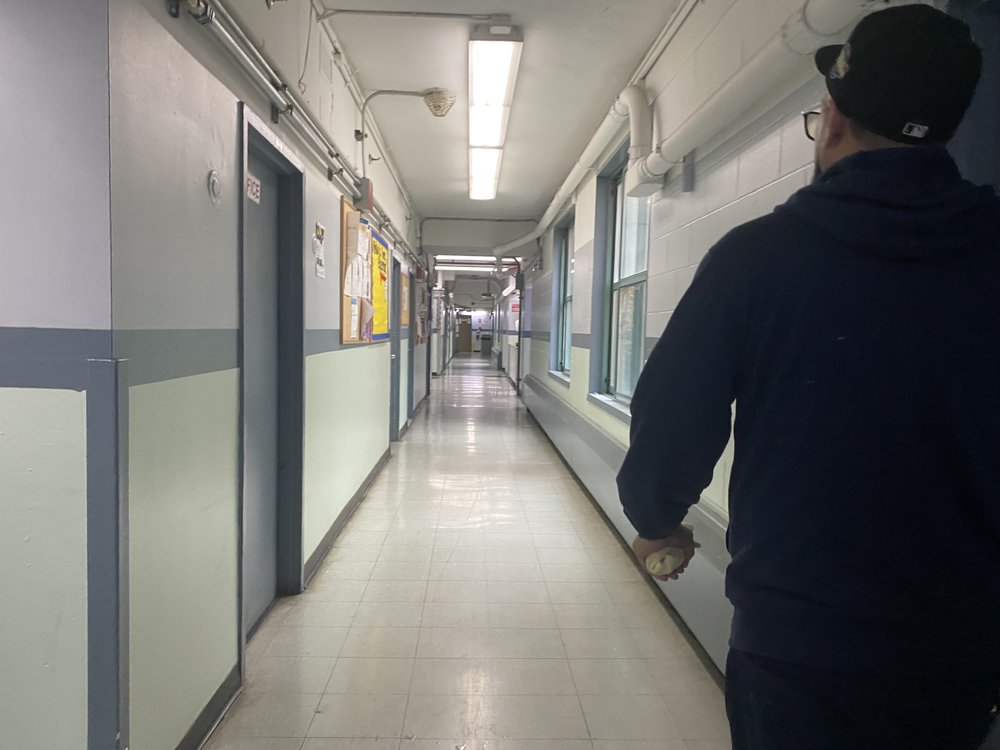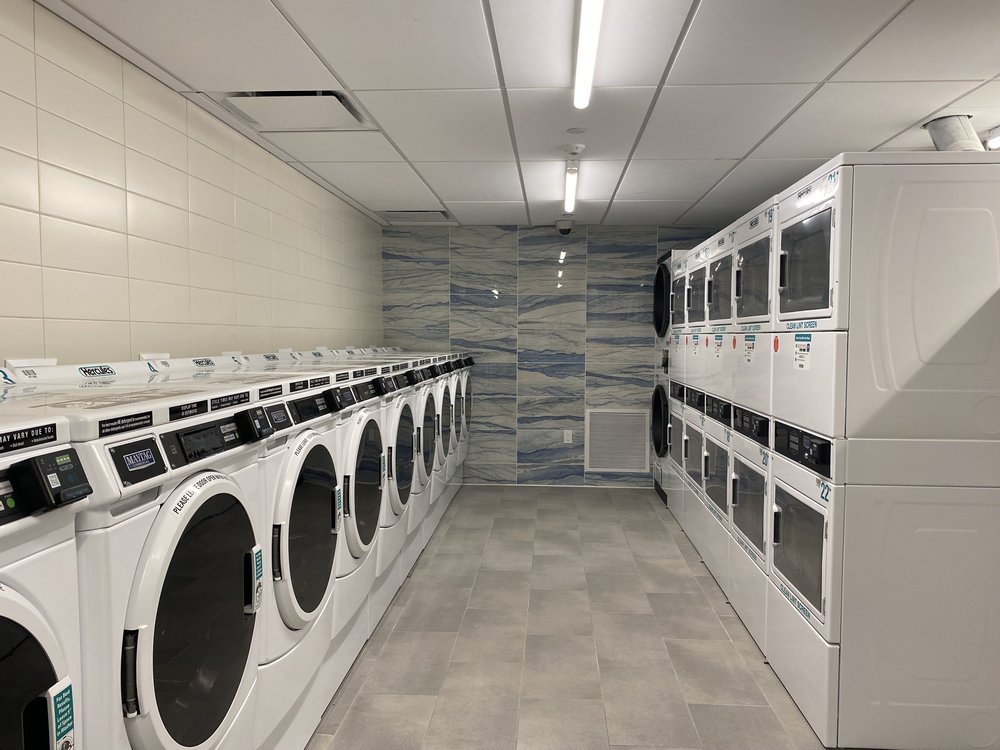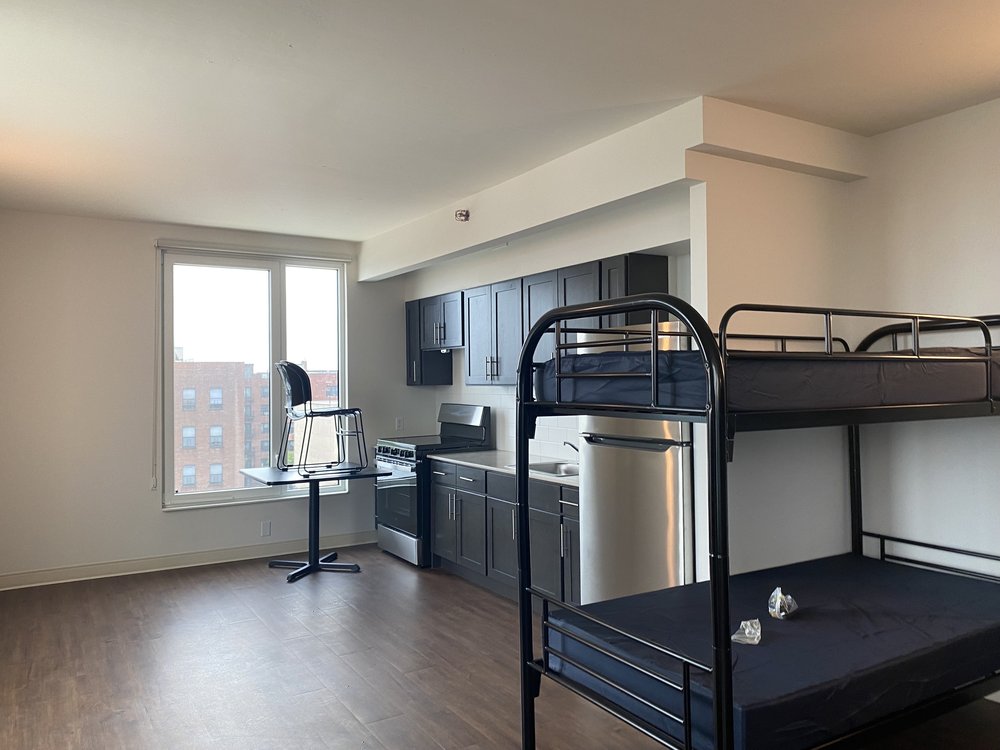NYC wants to make it easier for nonprofits to own homeless shelters. Here's why.
May 15, 2025, 6:30 a.m.
Apartment-style units in a new 95-bed shelter for families with children are equipped with stainless steel refrigerators, recess lighting, a laundry room and day care on the first floor.

A new 95-bed shelter for families with children opened last month thanks to a city tool that helps nonprofits own the shelters they manage.
New York City officials said the model will help shelter providers develop their own buildings instead of relying on private landlords for space, as they've done for decades. And those buildings will be more pleasant and welcoming.
Last month, Win, the largest operator of shelters for families with children, opened its newest facility in the Bronx. The bright, apartment-style units are equipped with stainless steel refrigerators, recess lighting, a laundry room and day care on the first floor.
Win CEO Christine Quinn said the new shelter is nicer because it’s developed and owned by the same people who will run it.
“We should be developers and owners of shelters because we do it better,” Quinn said of nonprofit providers.
“ We do it better from the perspective of building buildings that are actually designed to reduce trauma," she said. "And to provide the services comprehensively that our clients need so they can move out of shelter and never return.”
While the city pays nonprofits to operate shelters, nonprofits typically lease space from private landlords. But now the city is making it easier for nonprofits to use city funding to unlock private financing and build their own buildings.
The Department of Homeless Services said the arrangement saves taxpayers money in the long run. It's like paying a fixed rate 30-year mortgage rather than paying rent to landlords who can jack up the price or refuse to make capital improvements.

“ It's a mortgage the same way anybody has a mortgage on a home. We don't have to worry about rent adjustments during that time period,” said DHS Commissioner Molly Wasow Park. “ Over the lifetime of the use as a shelter, it will absolutely be less expensive.”
This is not the first time the city has encouraged nonprofits to own the shelters they operate but Park said the Adams administration made it easier and faster for nonprofits to utilize city contracts to convince banks to loan to them; the debt is then paid with city funding.
Eleven shelters have opened since 2022 utilizing the model, creating 2,800 beds for single adults and families. That includes the city’s first pet-friendly shelter and another set aside for formerly incarcerated homeless New Yorkers over the age of 50. Another two dozen shelters are in the pipeline.
Park said the city isn't increasing the total number of shelters, but rather replacing older sites and moving out of hotels that are much more expensive. The city grew its reliance on hotels during the migrant crisis. Park said privately owned shelters also make it difficult for the city to hold landlords accountable for physical improvements.

It costs $270 a day to house a family with children in shelter and about $143 a day to house a single adult, according to the preliminary Mayor’s Management Report. Costs to house asylum-seekers, many of whom are sheltered in hotels, average $371 per household per night, city data shows.
”If I can replace a hotel room where we're paying a nightly hotel rate with something where I can say we're gonna pay a fixed real estate cost for 30 years, that is absolutely the most financially responsible thing that I can do,” Park said.
Win’s new $70 million Ruby Dee shelter, named after actor and Civil Rights activist Ruby Dee, will house 95 families.
It’s a stark contrast to the old shelter next door that Win managed that will be demolished and turned into supportive housing. Not all the units had full kitchens, the windows were covered with bars, the doors were stamped in block letters with each unit number under bright fluorescent lighting.

Ruby Dee's hallways are painted in a cool blue, its floors are made of vinyl tile, and each unit has a full kitchen equipped with glass top stoves, common areas, a bathroom and closets. The building is entirely ADA-compliant with large windows and bunk beds in each unit. There’s also trash, recycling and composting rooms on each floor.
“ You want them to feel at home while they're in this facility,” said Anthony Andreano, Win's director of real estate. He said everything was designed with input from shelter staff. Even the kitchen cabinets even close “softly” because “ kids are always get their hands stuck in the drawer,” Andreano said.
“ This is how we should be building, this is how we should be designing. These shelters should be made with the purpose of ending the family homelessness crisis. And you can do that without breaking the bank,” Quinn said.
She said private landlords want to maximize the number of units to make more money off the lease and often will fight over installing basic amenities like medicine cabinets or closets. Quinn said two Win shelters were actually built as market-rate apartments but developers realized they could make more money turning them into shelter space.

The city gave Win the land to develop its new shelter for $1.
Kesha McFarlane, Win’s program director, said she thinks the space will shorten the average length of time families reside in shelters, which can average about a year.
In the new facility, the staff can all work in one area, the kids will have a playground and large recreation rooms so their parents can work with their case managers or learn to balance their budget or take a computer class.
McFarlane described losing your home and having to enter the shelter system as “automatic trauma.” But walking into a brightly lit, new space can help lessen that.
“ I feel that this environment will motivate them to want to do more for their housing,” she said.
A look inside NYC’s ‘safe haven’ shelters, an alternative to sleeping in the streets and subway How can NYC’s next mayor bring down homelessness? Housing groups weigh in.